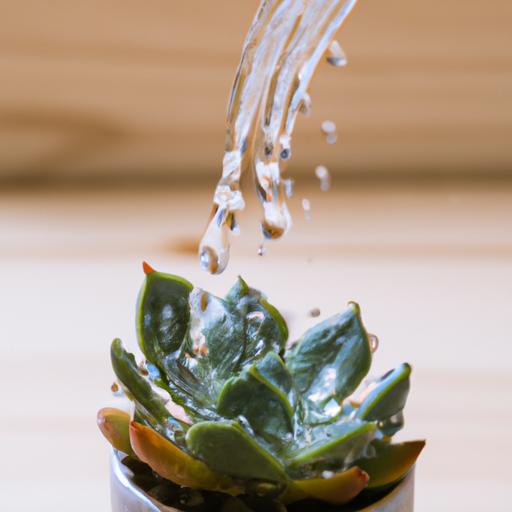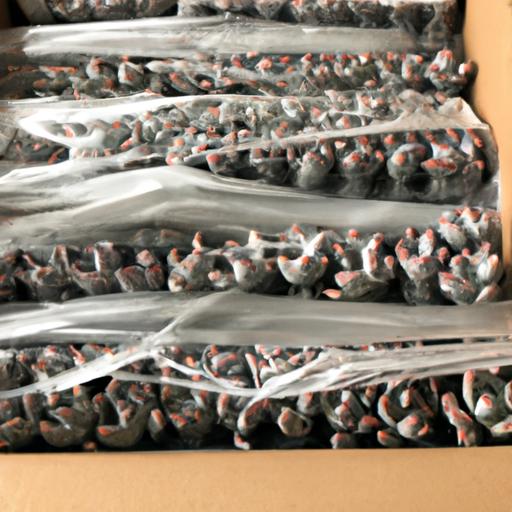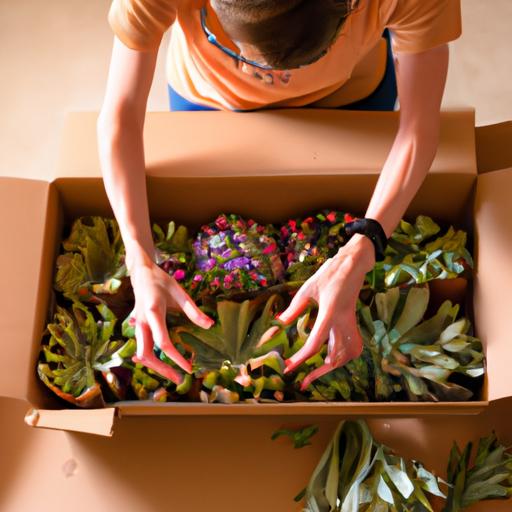Succulents have become increasingly popular in recent years, with their unique shapes and vibrant colors adding a touch of nature to any indoor or outdoor space. However, shipping these delicate plants can be a challenge, and without the proper techniques, they may arrive damaged or even dead. That’s why it’s crucial to follow a detailed guide when shipping succulents to ensure their safe arrival and continued health.
The success of shipping succulents relies heavily on the proper techniques employed during the process. Unlike other plants, succulents have a unique structure that allows them to store water, making them more susceptible to damage during shipping. Therefore, it’s important to use the right packaging materials and shipping methods to avoid any unnecessary harm.
In this detailed guide, we will discuss the steps you need to take to ship succulents successfully. From preparing your plants for shipping to choosing the right packaging materials and shipping methods, we will cover everything you need to know to ensure your succulents arrive safely and in good health. So, let’s dive in and learn how to ship succulents with ease!
Preparing Succulents for Shipping

When it comes to shipping succulents, preparation is key. Taking the time to properly prepare your plants before shipping will ensure they arrive at their destination healthy and ready to thrive. Here are some steps to follow when preparing your succulents for shipping:
Choosing Healthy Plants to Ship
Before shipping your succulents, it’s important to select the healthiest plants in your collection. Choose plants that are well-rooted and free from any pests or diseases. This will not only ensure that the plants survive shipping but will also give the recipient a healthy plant to care for.
Timing of Shipping to Avoid Extreme Temperatures
Succulents are sensitive to extreme temperatures, so it’s important to time your shipping accordingly. Avoid shipping during the hottest or coldest months of the year, as this can cause damage to the plants. Instead, choose a time when temperatures are mild and stable to ensure the plants arrive in optimal condition.
Preparing Soil and Containers for Safe Transportation
Once you’ve selected your plants and determined the best time to ship, it’s time to prepare the soil and containers for safe transportation. Use a well-draining soil mix that’s suitable for succulents and ensure that the plants are potted in sturdy containers. You may also want to add some extra packing material, such as shredded paper or bubble wrap, to keep the plants from shifting during transit. By taking these steps, you can help ensure that your succulents arrive at their destination healthy and ready to thrive.
Packaging Materials

When it comes to shipping succulents, choosing the right packaging materials is key to ensuring they arrive safely and in good health. Here are some things to keep in mind when selecting packaging materials for your succulents:
Choosing Appropriate Packaging Materials
Choose packaging materials that will protect your succulents from damage during shipping. This can include boxes, bubble wrap, packing peanuts, and other materials that provide cushioning and support.
Types of Packaging Materials
Boxes are a great option for shipping succulents, as they provide ample space for the plants and additional support. Bubble wrap and packing peanuts can be used to fill the gaps between the plants and the box, providing extra cushioning during transit. Additionally, using biodegradable materials can help reduce your environmental impact.
Importance of Labeling and Marking Packages
Labeling and marking your packages is essential for easy identification and handling during shipping. Be sure to include the recipient’s address and contact information, as well as your own, to ensure the package is delivered to the correct address. You may also want to include a “fragile” label or other similar markings to alert the shipping carrier that the package contains delicate items.
By selecting appropriate packaging materials and labeling your packages correctly, you can help ensure your succulents arrive safely and in good health. With the right care and attention, your succulents will thrive in their new home!
Shipping Methods

When it comes to shipping succulents, there are several methods to choose from. Each method has its own set of pros and cons, cost considerations, and delivery time frames. Let’s take a closer look at some of the most popular shipping methods available.
USPS (United States Postal Service)
USPS is a popular choice for shipping succulents due to its affordable rates and wide delivery network. It offers several shipping options, including First Class Mail, Priority Mail, and Priority Mail Express. First Class Mail is the most cost-effective option, but it can take up to five days for delivery. Priority Mail is a bit more expensive, but it guarantees two-day delivery. Priority Mail Express is the most expensive option, but it guarantees overnight delivery.
Pros:
- Affordable rates
- Wide delivery network
- Multiple shipping options
Cons:
- Longer delivery times for lower-cost options
- Limited tracking options
FedEx
FedEx is another popular shipping carrier for succulents. It offers several shipping options, including Ground, Express Saver, 2Day, and Overnight. Ground is the most cost-effective option, but it can take up to five business days for delivery. Express Saver is a bit more expensive, but it guarantees three-day delivery. 2Day and Overnight are the most expensive options, but they guarantee two-day and overnight delivery, respectively.
Pros:
- Wide delivery network
- Multiple shipping options
- Guaranteed delivery times
Cons:
- Higher rates compared to USPS
- Limited tracking options for lower-cost options
Other Shipping Methods
Other shipping methods, such as UPS and DHL, are also available for shipping succulents. They offer similar shipping options and delivery times as USPS and FedEx, but their rates may vary depending on the destination and package weight.
When choosing a shipping method, consider the destination, delivery time frame, and cost. It’s also important to choose a carrier that offers tracking options so you can monitor your package’s progress until it arrives at its destination. With the right shipping method, you can ensure your succulents arrive safely and in good health.
Unboxing and Care Instructions
How to Properly Unbox and Unpack Succulents After Shipping
Once your succulents arrive, it’s crucial to unbox and unpack them correctly to avoid any further damage. Follow these steps to ensure your plants receive the proper care during this process:
- Carefully cut open the box, taking care not to damage any of the plants inside.
- Remove any packing materials such as bubble wrap or packing peanuts.
- Inspect each plant for any signs of damage, such as broken stems or leaves.
- Gently remove the plants from their containers and inspect the root systems. If any roots appear damaged or dry, give them a quick soak in water before repotting.
- Place the plants in their new containers and add fresh soil as needed.
- Water the plants lightly, being careful not to overwater them.
Care Instructions for Newly Shipped Succulents
After unpacking your succulents, it’s important to give them the proper care to ensure their continued health. Here are some care instructions to follow:
- Watering: Succulents are drought-tolerant plants and don’t require a lot of water. Water them only when the soil feels completely dry to the touch.
- Sunlight: Succulents require bright, indirect sunlight to thrive. Place them near a window that receives plenty of natural light, but avoid direct sunlight, which can scorch their leaves.
- Temperature: Succulents prefer warm temperatures ranging from 65-85°F (18-29°C). Avoid placing them in areas with extreme temperatures, such as drafty windows or near heating and cooling vents.
- Fertilizing: Succulents don’t require a lot of fertilizer, but you can give them a small amount of cactus-specific fertilizer once or twice a year during the growing season.
By following these care instructions, you can ensure your newly shipped succulents will thrive and continue to bring joy to your home or office.
Conclusion
In conclusion, shipping succulents can be a tricky process, but with the right techniques, it can be done successfully. By following the steps outlined in this detailed guide, you can ensure that your succulents arrive safely and in good health.
Remember to choose healthy plants and prepare them for shipping by timing the shipment to avoid extreme temperatures and properly packing them with the right materials. Consider various shipping methods, keeping in mind the cost and delivery time frame, and don’t forget to label and mark your packages for easy identification.
Once your succulents arrive, be sure to unpack them carefully and provide them with the proper care instructions, including watering and sunlight. With these tips in mind, you can successfully ship your succulents and continue to enjoy their beauty for years to come.
Don’t be afraid to share your experiences and tips for shipping succulents with others in the plant community. By working together, we can all help each other succeed in the art of shipping these delicate and beautiful plants.
